Family : Cirrhitidae

Text © Giuseppe Mazza

English translation by Mario Beltramini
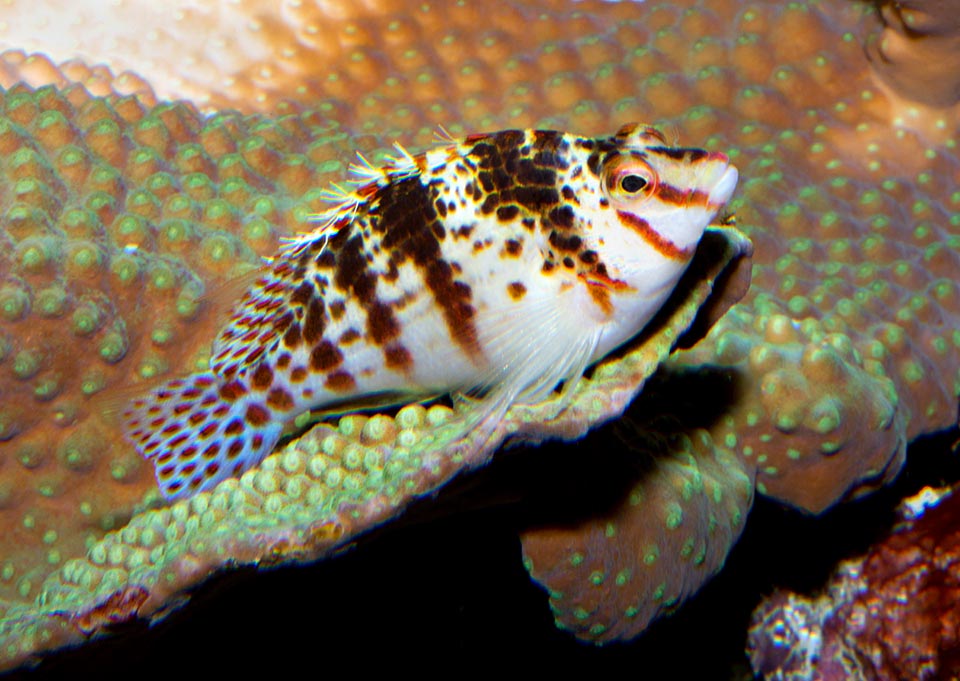
The Dwarf hawkfish (Cirrhitichthys falco) is a benthic species present up to 40 m of depth in the madreporic formations of the tropical Indo-Pacific © Giuseppe Mazza
The Dwarf hawkfish (Cirrhitichthys falco Randall, 1963) belongs to the class of Actinopterygii, the ray-finned fishes, to the order of Perciformes and to the small family of the Cirrhitidae with 9 genera and 32 species.
The etymology of the genus Cirrhitichthys comes from the Latin “cirrus” = tuft of hair and from the Greek “ichthus” = fish, with a reference to the small tufts which may be noted on the spiny rays of the dorsal fin.
The name of the species “falco” = hawk n Latin, reminds that this fish more than swimming, it darts and stays perched per hours, like a raptor, on the branches of the madrepores, ready to jump in a dive on the preys.
Zoogeography
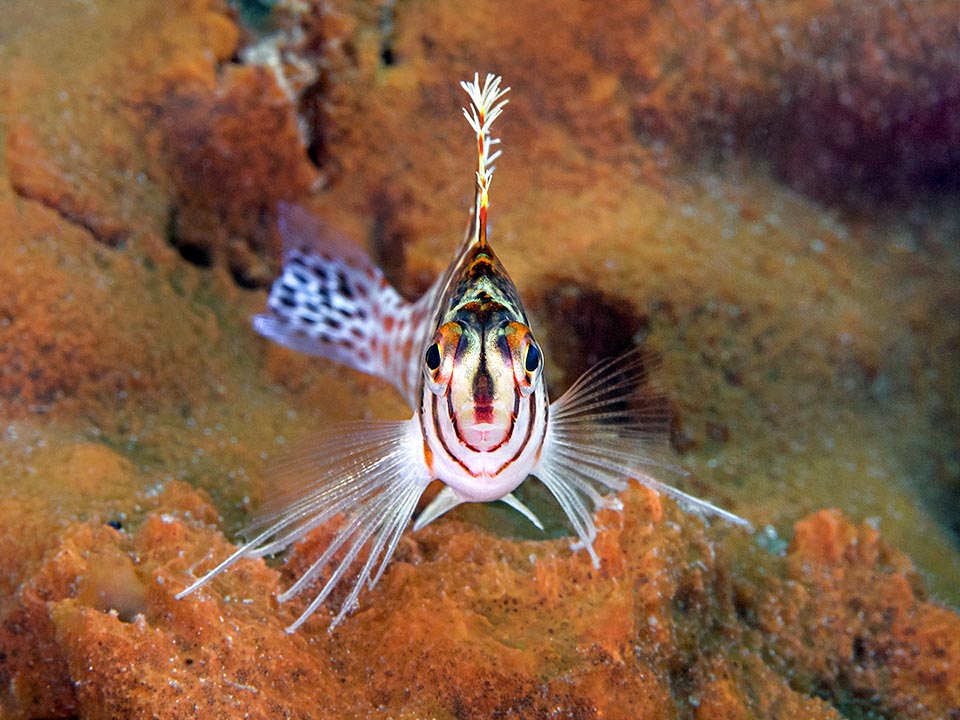
It measures just 7 cm. Typical are the dorsal fin tufts and the released rays of the pectoral fins used as legs for moving among the corals © Rafi Amar
It lives in the tropical waters of the Indian and Pacific oceans. We find it, indicatively, at the Seychelles Islands, the Maldives, in Australia, in Indonesia, in New Guinea, in Micronesia, at Palau, in the Philippines, Taiwan and in the southern part of Japan. In the southern hemisphere, it reaches New Caledonia, the Fiji Islands, the Samoa Islands, and the Archipelago of Tonga.
Ecology-Habitat
It is a benthic animal, at home in the madreporic formations up to 40 m of depth.
Morpho-physiology
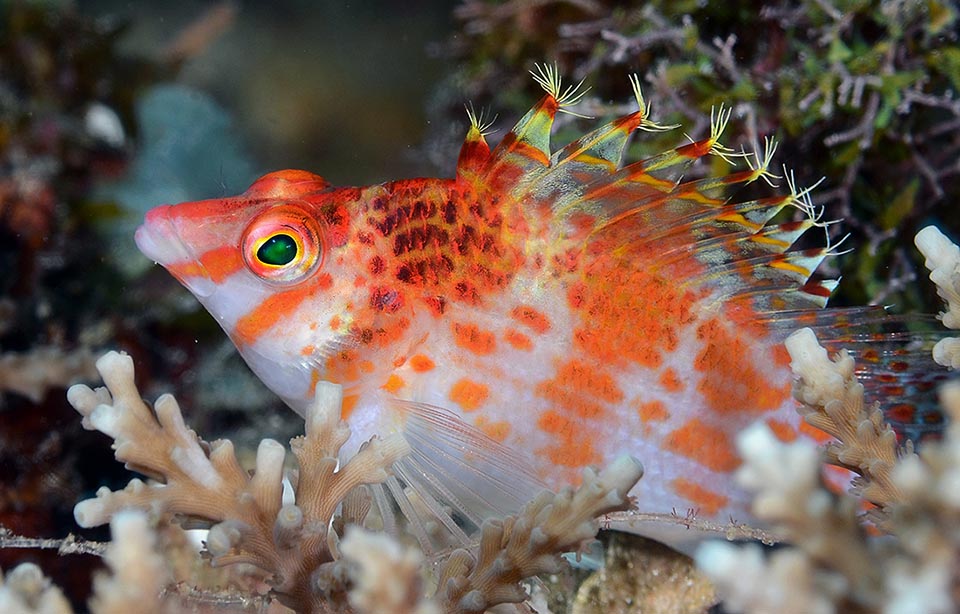
Swim bladder is missing, but it’s of no use, as it spends most of its time motionless, moving only the eyes looking for an easy prey © Benoit Lallement
The shape of body is vey similar to that of the Cirrhitichthys oxycephalus but it is much smaller, reaching at most the 7 cm. Also here there is only one dorsal fin with 10 spiny rays, ending with the small tufts, and 12 soft rays. The anal counts 3 spiny rays and 6 unarmed, whilst the pectoral show, as customary among the hawkfishes, long and thick rays, freed between them, serving for moving among the corals. The caudal fin is more or less truncated.
The head, with longer snout than the oxycephalus, seems almost a beak, but are present small teeth, bent inwards, for holding the preys. The mimetic livery foresees some lined red and brown spots with more or less vertical bands of the same colour.
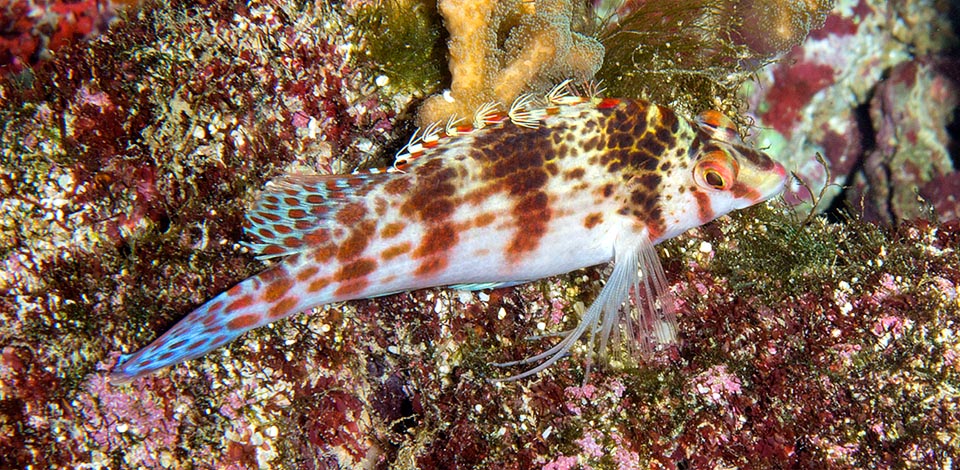
This observes the surroundings camouflaged ready to dive, like a hawk, on the small passing by fishes and the small crustaceans © Giuseppe Mazza
There is no swim bladder, but this is of no use, seen that it spends most of the time motionless, moving only the eyes looking for an easy prey.
Etology-Reproductive Biology
The dwarf hawkfish nourishes greedily of small fishes and crustaceans. It is a protandric hermaphrodite species: that is, all the individuals are born female, but can then, ageing, change sex. Each male has a small hunting territory, that it defends from the competitors, allowing the entrance only to females. When it dies, contrary to what happens in the world of the Amphiprion, here is the biggest female changing sex and so inherits the small harem.
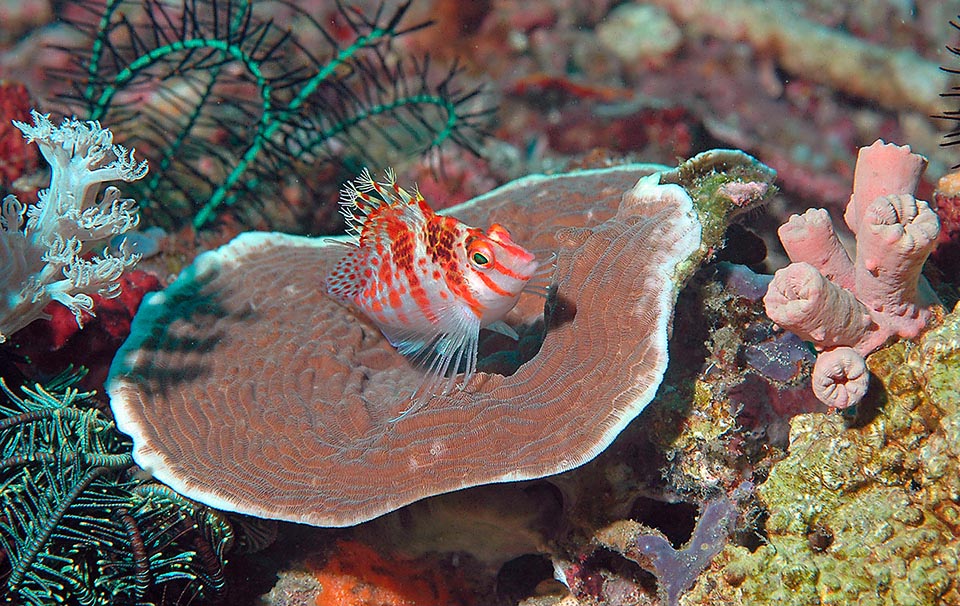
Small but gutsy, the males of the Cirrhitichthys falco own a territory and a harem. When they pass away the largest female changes sex and takes over the command © Benoit Lallement
This is however a less rigid scheme because, when the members are less numerous, it may also happen that an impatient female becomes male before the time, ousting the ruler in office with furious fights. The matings take place, with spread fins, with showy jumps up to 60 cm from the bottom and the fecundation on the fly of the planktonic eggs.
Seen the vast distribution and the fact that it has practically no foes, the Cirrhitichthys falco is not an endangered species. The fishing vulnerability index marks just 10 on a scale of 100.
Synonyms
Cirrhitichthys serratus Randall, 1963.
→ For general information about fishes please click here.
